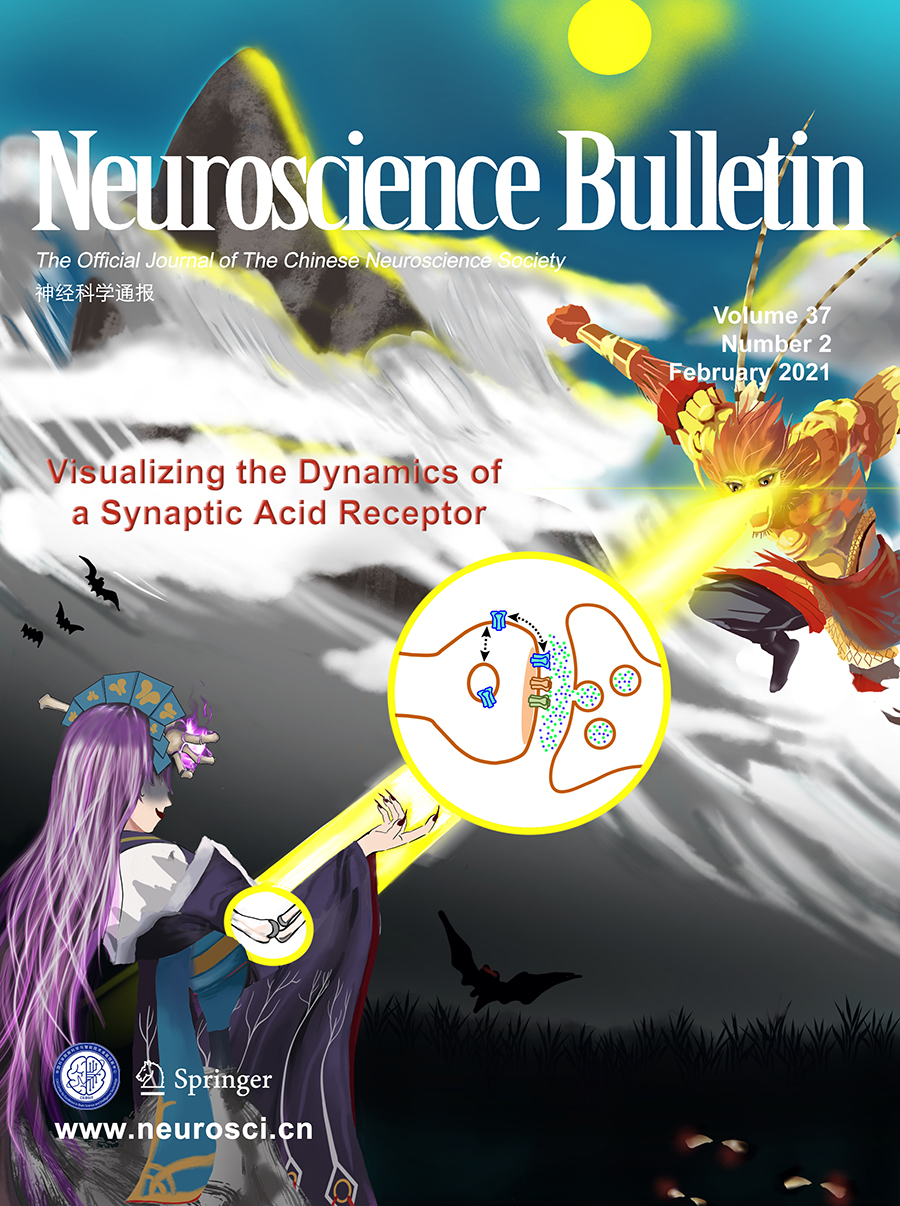Postsynaptic Targeting and Mobility of Membrane Surface-Localized hASIC1a
Xing-Lei Song • Di-Shi Liu • Min Qiang • Qian Li • Ming-Gang Liu • Wei-Guang Li • Xin Qi • Nan-Jie Xu • Guang Yang • Michael Xi Zhu • Tian-Le Xu
2021, 37(2): 145-165 [
Abstract] [
SpringerLink]
[PDF]
Sex Differences in Electrophysiological Properties of Mouse Medial Preoptic Area Neurons Revealed by In Vitro Whole-cell Recordings
Wen Zhang • Shuai-shuai Li • Ying Han • Xiao-Hong Xu
2021, 37(2): 166-182 [
Abstract] [
SpringerLink]
[PDF]
Transcriptome Analysis Identifies SenZfp536, a Sense LncRNA that Suppresses Self-renewal of Cortical Neural Progenitors
Kuan Tian • Andi Wang • Junbao Wang • Wei Li • Wenchen Shen • Yamu Li
2021, 37(2): 183-200 [
Abstract] [
SpringerLink]
[PDF]
Antagonism of Protease-Activated Receptor 4 Protects Against Traumatic Brain Injury by Suppressing Neuroinflammation via Inhibition of Tab2/NF-κB Signaling
Jianing Luo • Xun Wu • Haixiao Liu • Wenxing Cui • Wei Guo • Kang Guo • Hao Guo • Kai Tao • Fei Li • Yingwu Shi • Dayun Feng • Hao Yan • Guodong Gao • Yan Qu
2021, 37(2): 242-254 [
Abstract] [
SpringerLink]
[PDF]
Projections from Infralimbic Cortex to Paraventricular Thalamus Mediate Fear Extinction Retrieval
Yan Tao • Cheng-Yun Cai • Jia-Yun Xian • Xiao-Lin Kou • Yu-Hui Lin • Cheng Qin • Hai-Yin Wu • Lei Chang • Chun-Xia Luo • Dong-Ya Zhu
2021, 37(2): 229-241 [
Abstract] [
SpringerLink]
[PDF]
Gender Role, But Not Sex, Shapes Humans’ Susceptibility to Emotion
Jiajin Yuan • Hong Li • Quanshan Long • Jiemin Yang • Tatia M. C. Lee • Dandan Zhang
2021, 37(2): 201-206 [
Abstract] [
SpringerLink]
[PDF]
Regulation of Cued Fear Expression via Corticotropin-ReleasingFactor Neurons in the Ventral Anteromedial Thalamic Nucleus
Yin Lv • Peng Chen • Qing-Hong Shan • Xin-Ya Qin • Xiu-Hong Qi • Jiang-Ning Zhou
2021, 37(2): 217-228 [
Abstract] [
SpringerLink]
[PDF]
Mapping the Brain-Wide Cholinergic Neurons Projecting to Skeletal Muscle in Mice by High-Throughput Light Sheet Tomography
Dayu Chen • Xiaofeng Cheng • Xiong Yang • Yongsheng Zhang • Zhigang He • Qian Wang • Guojie Yao • Xiuli Liu • Shaoqun Zeng • Jincao Chen • Hongbing Xiang
2021, 37(2): 267-270 [
Abstract] [
SpringerLink]
[PDF]
Lin28a is Essential for Synaptic Plasticity in Dentate Granule Cells and Spatial Memory
Zhechun Hu • Jiao Ma • Yan Gu
2021, 37(2): 261-266 [
Abstract] [
SpringerLink]
[PDF]
Modeling the Degradation Effects of Autophagosome Tethering Compounds
Hang Zhang • Ping An • Yiyan Fei • Boxun Lu
2021, 37(2): 255-260 [
Abstract] [
SpringerLink]
[PDF]
Functional Striatal Abnormalities: A Distinct Brain Signature of Schizophrenia
Sugai Liang • Tao Li
2021, 37(2): 284-286 [
Abstract] [
SpringerLink]
[PDF]
Apolipoprotein E Drives Early Blood–Brain Barrier Damage in Alzheimer’s Disease
Qianqian Zhang • Chunming Xie
2021, 37(2): 281-283 [
Abstract] [
SpringerLink]
[PDF]
Brain Macrophages: Close or Distant Relatives?
Kelei Cao • Yaling Hu • Zhihua Gao
2021, 37(2): 278-280 [
Abstract] [
SpringerLink]
[PDF]
Axonal Iron Transport might Contribute to Iron Deposition in Parkinson’s Disease
Leilei Chen • Chong Li • Junxia Xie
2021, 37(2): 275-277 [
Abstract] [
SpringerLink]
[PDF]
Reversion of Injured Adult Neurons to an Embryonic State by Grafts of Neural Progenitor Cells After Spinal Cord Injury
Liying Cao • Yongjie Wang • Zhihui Huang
2021, 37(2): 271-274 [
Abstract] [
SpringerLink]
[PDF]
